
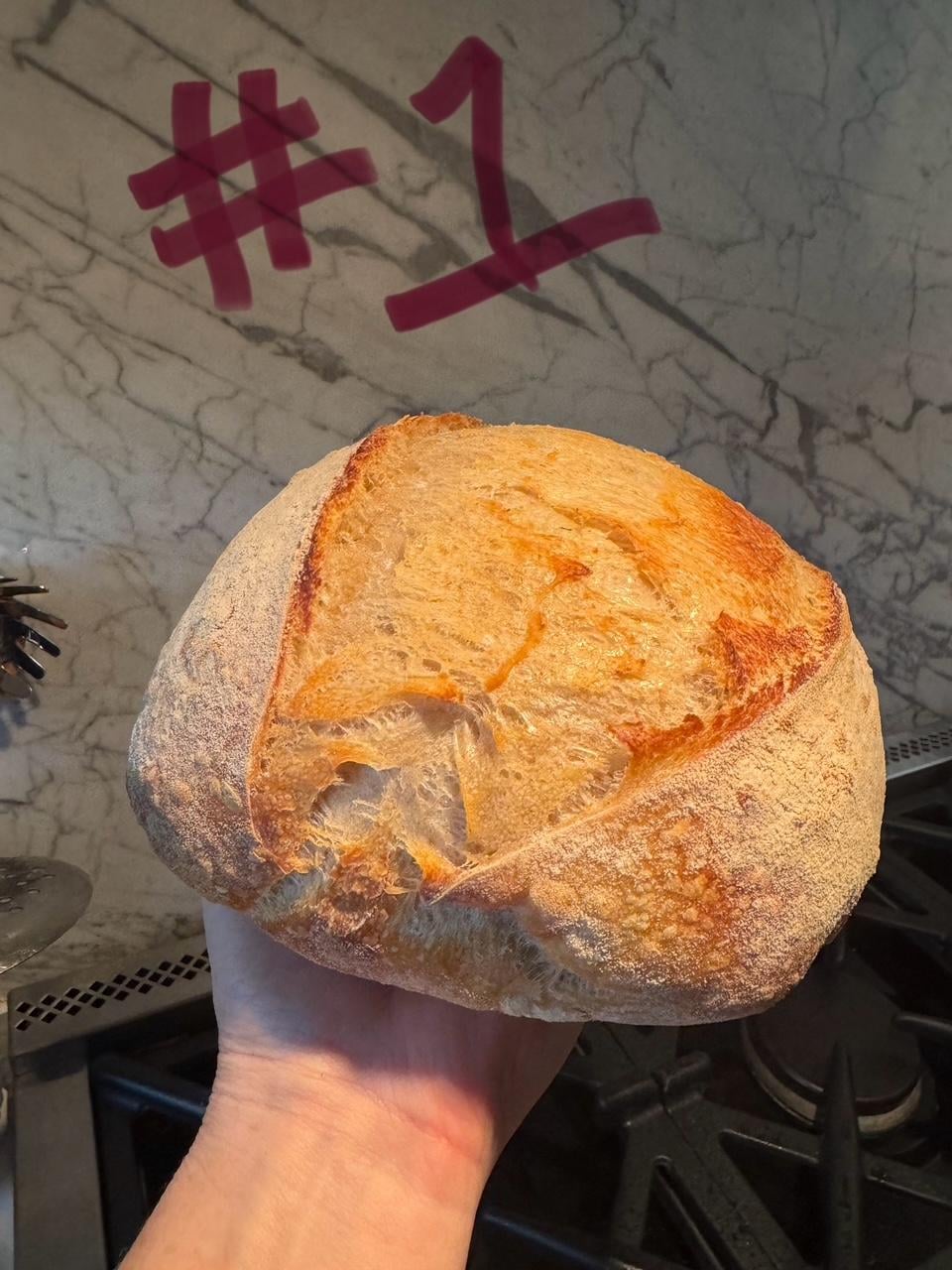
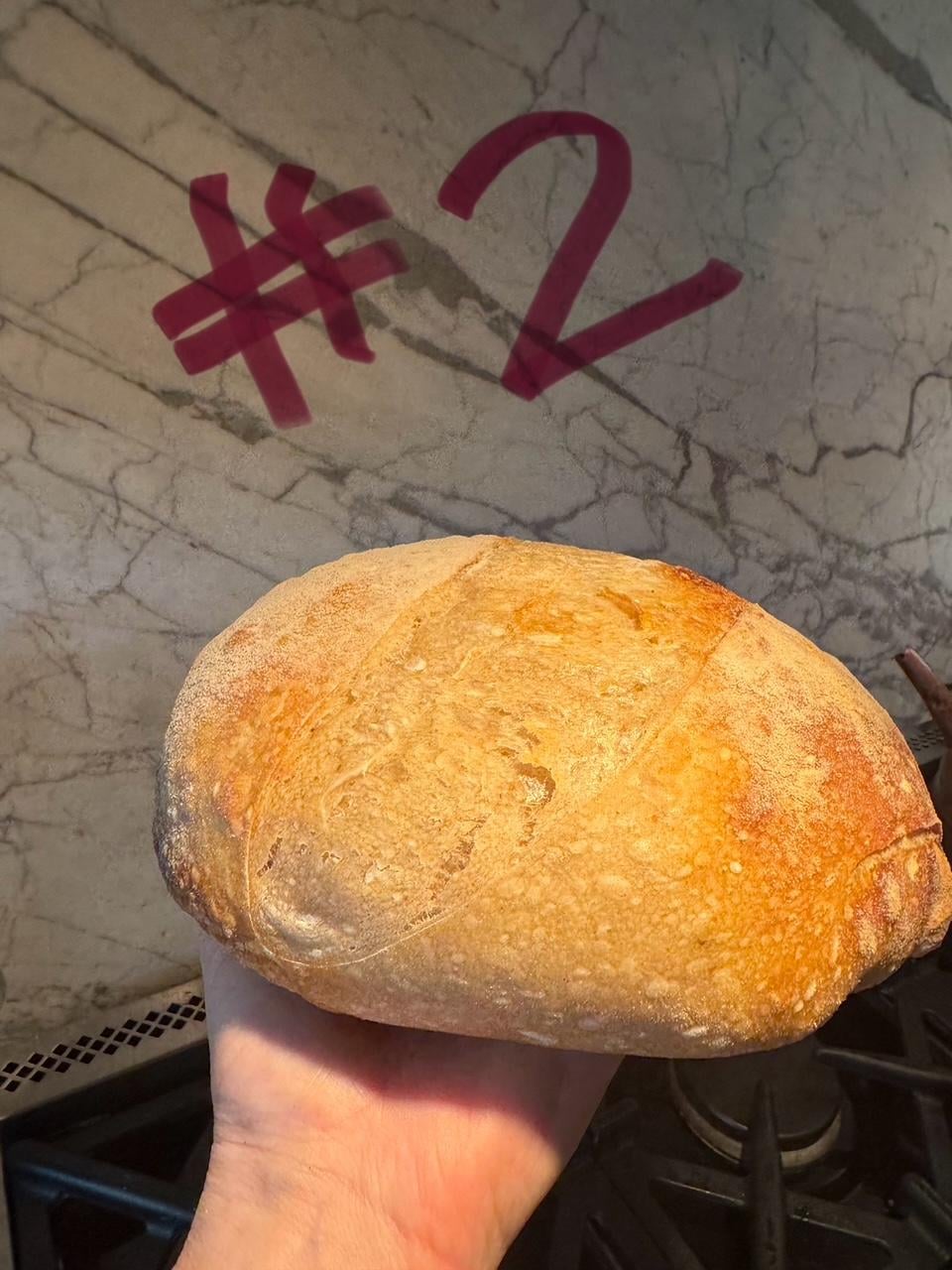
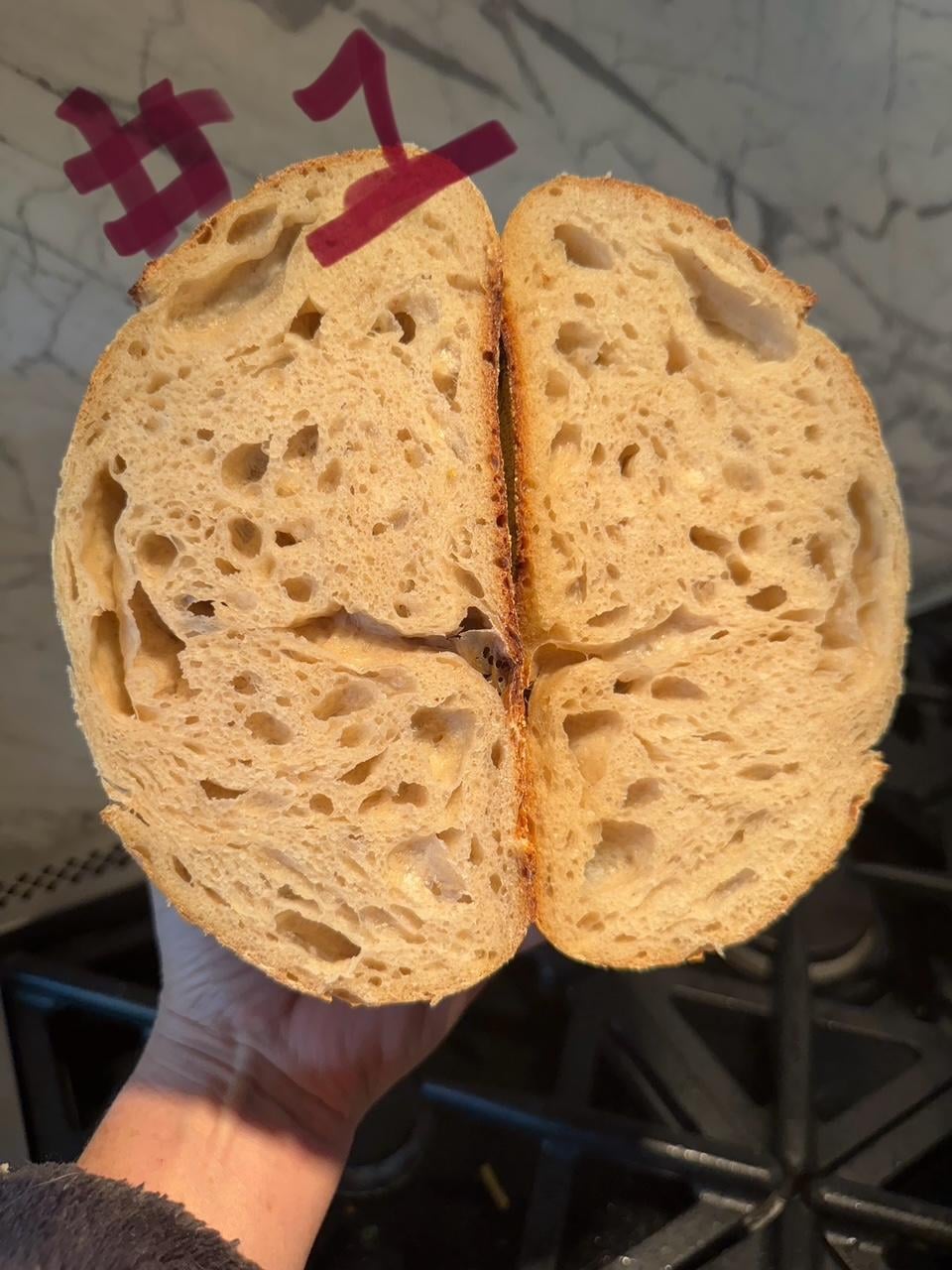
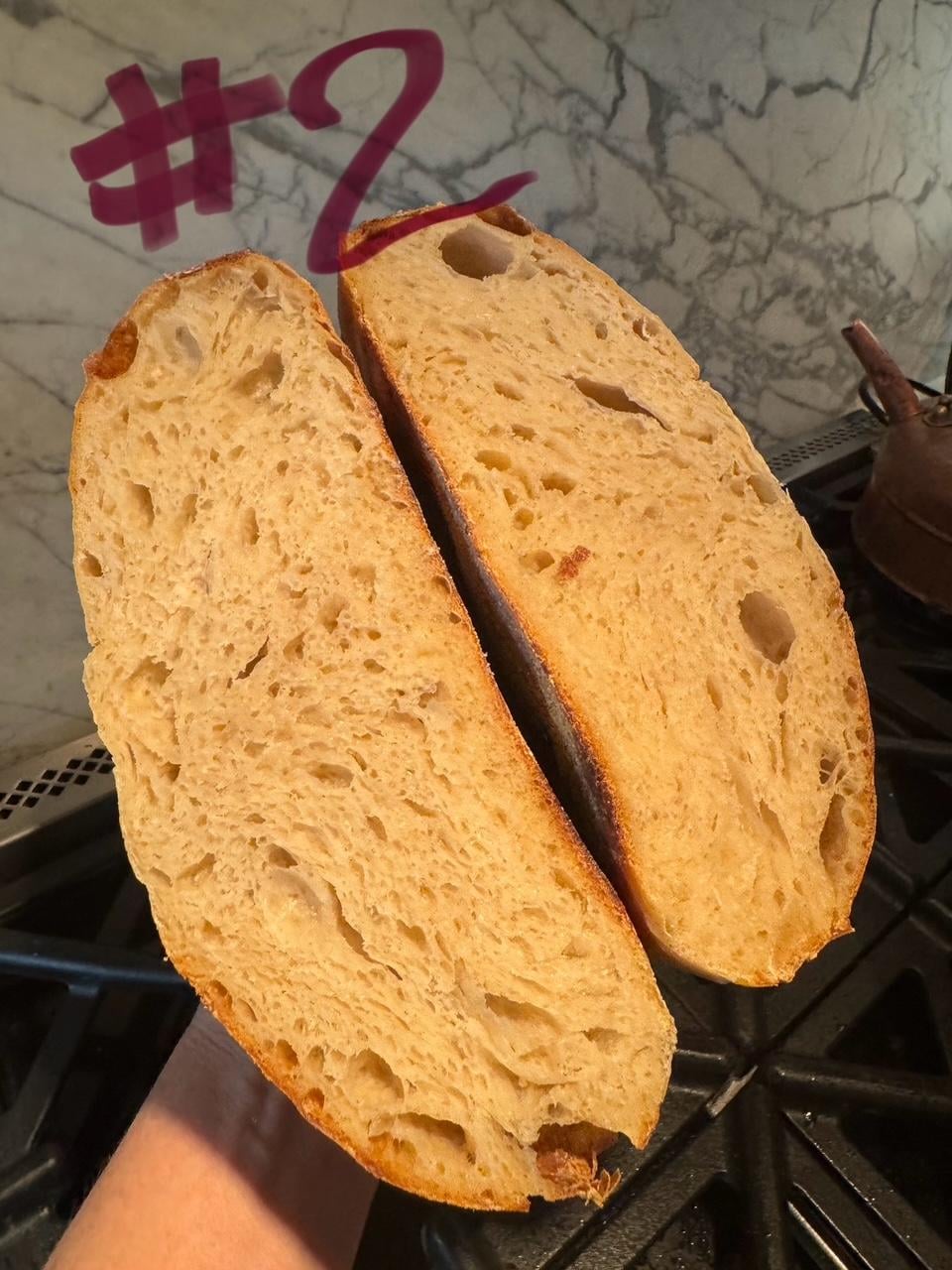
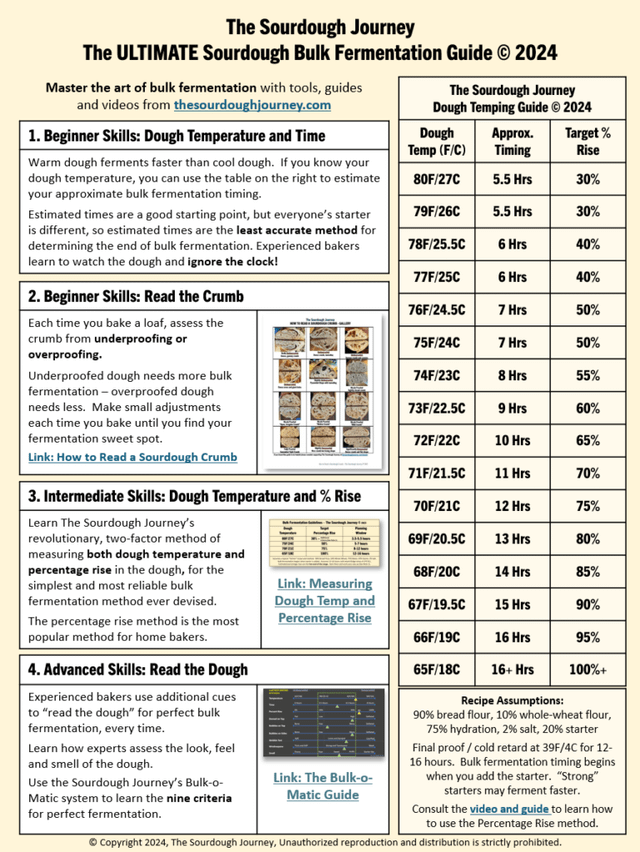
I’ve been baking sourdough since Jan 2020, and still learning all the time. Yes, plenty of AM I GOING INSANE/WHY CAN'T I GET THIS SHxT RIGHT?!?! phases. For a few months now I have really been tracking what I do, with an emphasis on paying attention to temperature (dough and environment) and time.
I’ll bake 2 (or 3) loaves, with ideally just one variation between the two (or three; honestly three is too many). Then take what worked better, and move that forward to the next bake.
This weekend’s bake really surprised me: it seems good v bad came down to 1-2 degrees in dough temperature (which, of course, impacted total rise %).
Loaf #1 was consistently 78 degrees, and Loaf #2 was consistently 79-80 degrees. Both BF for the same amount of time (now I know that was a mistake), about 4 hours 45 mins, and were in the proofing box at 78 degrees. I also took note that Loaf #2 started to form bubbles about 30 mins sooner than Loaf #1. At the end of BF, Loaf #1 grew about 50%, and Loaf #2 grew about 60%. Obviously Loaf #2 went too far.
I would not say I could really tell when shaping (they both seemed the same), though thinking back Loaf #2 was a little stickier.
I’m just so surprised that the 1-2 degree temp difference (and ultimately the % dough rise) had this much impact between the two loaves! So taking what I learned this week, next week I’ll aim to keep both doughs 78 degrees (which I have found is set from the start by the water temperature, and then of course the environment), and go for a 40% growth versus a 50% growth. AND/OR, commit to The Sourdough Journey's chart and if let the dough grow to the noted percentage, based on the dough temp (which on this bake should have been 40% for Loaf #1 and 30% for Loaf #2); though, mine always take much less time than what his chart notes, but also as he notes, go by the dough/not the clock (!).
RECIPE
120g starter
335g water (78 degrees; 71% hydra)
450g flour (475 Kyrol Bread Flour/25g Whole wheat flour)
13g salt
Mix all ingredients, then "knead" in a stand mixer on low with dough hook for 3-4 minutes; Brod&Taylor proof box set to 78 degrees. S&F every half hour for 2.5 hours (= 5 total S&F). Continue BF until bubbles top/sides and domed (I went to 50-60% which was about 4 hrs 45 mins). Pre-shape, rest 30 mins covered on counter, shape and fridge proof for 12 hours. Preheat oven/DO for one hour at 500; bake at 450 with 25 mins lid on / 20 mins lid off.
by Here2todayOK

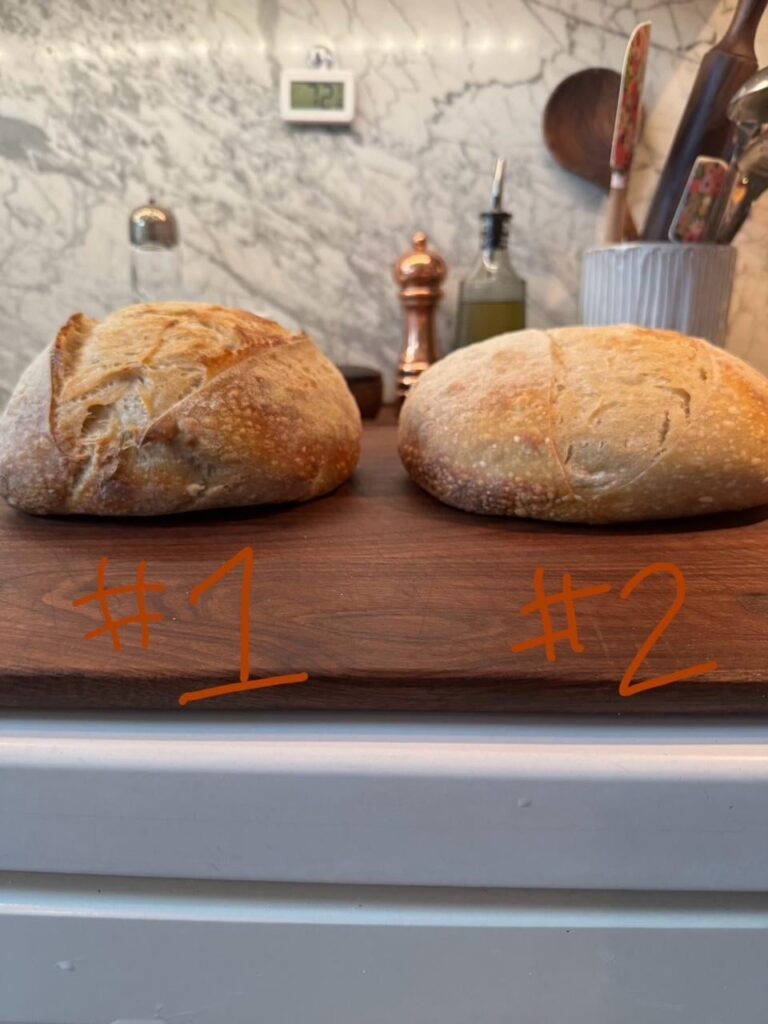
22 Comments
Interesting! I’m too disorganized to track details so I appreciate your sharing.
Yea, that’s consistent with how the bugs (yeast & bacteria) multiply in an exponential fashion 🙂
Very cool to see you take a detailed approach
Baking certainly is a science 😅Very cool experiment!
Thanks for the insights! My interpretation would be that the second loaf might be slightly overproofed due to the higher temperature. The crumb pattern points that way to me. I’m still learning though, so I’m curious what others think too!
Fun!
On another subreddit, someone (who I thought was a baker) was trying to tell me taking dough temperature is unnecessary and a sign of pretentiousness. 🙄
How are you tracking your % rise?
This happens to me often, and I think both were on the brink of over proofing with the first just making it out ok and the second too far gone, at least thats what I thought was happening to mine, bet they taste nice though 😊
I’m thinking both are over fermented. Why are you using so much starter? 27% at 78 seems like you won’t be able to control the fermentation. Plus the dough continues to ferment in the fridge. At 78 your rise should be 30-40%. I’d suggest dropping starter to 20% and shaping after 35% rise. Both loaves show evidence of over fermentation.
Just so I understand…. your findings show that it is better to BF the dough COOLER. and then there are fewer bubbles early on and it yields a Fluffier / higher loaf. Is that correct?
I am so new to this that I think I’ve been doing it Backwards. I usually put my BF on a seed starting mat, and then BF for like 2-3 hours. and then I shape my loaves and banneton store them in the fridge overnight….
Am I doing it wrong?
I love what you’re doing here. But this comment is to point out that I think it’s funny when food has buttcracks, and the first loaf cut looks like a butt.
I am an adult, not just middle school boys in a trench coat. 🫠
The sourdough journey chart assumes a recipe that among other things 20% starter, whereas your recipe here is 24% or 27%, depending on if it’s 450g flour listed ir the 500g in the parentheses… so the chart really isn’t applicable.
This is GREAT! I think I’m over BF’ing a bit. I never quite get the rise I want.
I never use a stand mixer, I only use S&F. But I’ve also been doing an 80% hydration bread, which may be for suitable for that. Have you ever experimented with just S&F?
My stand mixer died last year (it was very old; inherited) and I haven’t replaced it yet.
Both look like they will make my mouth bleed getting through that crust
Yes, I see this too. When you run your dough hot, there is very little grace time between well proofed and over proofed. I have to watch dough closely at those temperatures and cut off at 40% rise with less % starter than you are currently using.
I am proofing at 62-63°F overnight temperature today. 13 hours so far and maybe another hour to go. This batch of dough is moving a little slower than usual, but it will take much longer to overproof when the dough is cooler. I have just 15% starter in the recipe which is usually 12 hours of fermentation at these temps, but it is possible the temp dipped lower overnight. Unheated kitchen, so I play around with % of starter to guesstimate time to fully ferment the dough.
Also agree with frelocate that you probably need lower % rise targets for the amount of starter in your recipe.
it’s like it has a mind of it’s own sometimes.
water temp is important, but so is flour and starter temp! and more importantly air temp and humidity!
I have trained dozens of professional bakers on sourdough, and the number one issue was ALWAYS under mixing the dough. as part of your tests try pushing your mix time longer and longer until it fails.
once you have a recipe you trust, treat sourdough more like an art than a science. numbers and variables are great fun, but dont forget the basics
Great way to improve your process. I would cut back to 20% starter next. I think at 24% you have excessive enzyme activity that’s breaking down gluten structure toward the end of bulk, and your process will be more forgiving of minor shifts in temp etc if you go with a normal starter ratio.
I don’t have the attention span to do detailed experiments, so instead I change several variables wildly each bake, do it often, and over time hope that my innate human ability for pattern recognition converges them into a reasonable feeling of intuition. It’s sort of worked!
If I remember correctly from my days at culinary school, 1°c difference in temperature translate to 8% change in yeast activity, which is pretty significant!
I tend to BF at 72 degrees and I shape after it’s grown by 60-70% (I don’t always catch it at 65). I’ve found that if it goes over 65 it tends to still do very well. When I’ve done a BF at higher temps it is much less forgiving because the fermentation is more active. At least I think that’s the reason. I think that’s what the javelin throwing cartoon was all about in the sourdough journey video.
I love that you are detailing what you are doing and using the data to understand what the little bugs are doing! My approach is similar, but I am a ways behind you. I’m thinking about getting a proofing box to bring a bit more control and predictability to the process. You mentioned you use a proofing box. Might you have recommendations?